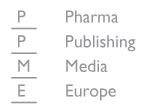

|
Abstract: |
At the 24th Drug Information Association Annual EuroMeeting held in Copenhagen, Denmark, 26–28 March 2012, a presentation was made by the Italian Medicines Agency [Agenzia Italiana del Farmaco, AIFA] on managed entry agreements as a way of implementing outcomes of assessment and enabling patient access to innovation.
All healthcare systems face three important challenges: guaranteeing a patient’s access to new treatments; coping with the uncertainty when deciding on pricing and reimbursement; and guaranteeing overall budget sustainability.
According to AIFA, in order to guarantee the affordability of innovative medicines, their usage must be linked with clinical outcomes obtained. Lack of evidence in real clinical settings, particularly for innovative medicines, has encouraged the agency to use conditional reimbursement schemes, termed ‘managed-entry agreements’, in line with the definition developed by the Health Technology Assessment International Policy Forum [1].
Italy is recognised as one of the pioneers in developing access schemes for new medicines. The prices of reimbursed innovative pharmaceuticals are usually associated with some form of conditional reimbursement agreement concluded by AIFA and pharmaceutical companies. The aim is to assure access to new medicines for all patients, maintain the pharmaceutical budget by using these innovative drugs in target disease populations, and avoid unnecessary expenses to the National Health Service.
AIFA has developed a wide range of approaches to manage the effect of new products and indications. Managed-entry agreements focus on managing the following: (1) the effect of new drugs on the budget; (2) the uncertainty of clinical or cost-effectiveness of a drug in a real-world setting; and (3) managing drug use for optimum performance, by targeting patients or using delivery mechanisms. The tools used by AIFA during the pricing and reimbursement process are presented in Figure 1.
Managed-entry agreements can play a key role in accessing medicines in cases where uncertainties are related to the therapeutic benefits of medicines or where the costs of new medicines are high.
The AIFA monitoring registry is an important tool that is used when a conditional reimbursement agreement is drawn up. The registry tracks the eligibility of patients and the complete flow of treatments. This tool guarantees appropriate use of medicines according to their approved indications. Patients eligible for treatment with pharmaceuticals are registered in specific monitoring registries so that the effectiveness of treatment can be evaluated in clinical practice. Epidemiologic, safety profile, and ex-post evaluation data on any missing information is also added to the registry.
These tools have been used in different therapeutic areas, see Figure 1. The most populated registry is the oncology registry, accounting for more than 40 therapeutic indications. Overall, about 80 therapeutic indications are included in the different therapeutic registries.
Conditional reimbursement is linked to the success of therapeutic effectiveness. The agency uses three different ways to share responsibility and risk within pharmaceutical companies and the National Health Service (a third-party payer), see Table 1.
Risk sharing and payment by results are two typical performance-based agreements conditioned by clinical evaluation of specific end points, with limitations of cost if the effect is inappropriate. The validity of these agreements is for a limited time period, under specific conditions, waiting to be re-evaluated. The most used conditional reimbursement schemes are payment by results and cost sharing. These tools are also important for supporting decision-making for innovative medicines.
Thirty-three oncology products are in place with the monitoring registry; among these, 21 are subject to conditional reimbursement—out of the 26 therapeutic indications.
At the European level, interest in the development of such types of tools continues to grow. AIFA, on behalf of the Italian National Health Service [Servizio Sanitario Nazionale, NHS] is actively involved in a project funded by the European Commission entitled ‘Capacity building on managed entry agreements for innovative medicines’. The project involves 19 European countries. All the countries agree that managed-entry agreements are valuable in helping to strike a balance between access to medicines and increasing costs.
The project has multiple objectives. These include: (1) collecting and analysing information about the managed-entry agreements used by the EU Member States to find a possible way of harmonising taxonomy; and (2) conducting a systematic analysis to support the decision-making process of competent authorities for reimbursement purposes. The findings could foster knowledge exchange among European Member States.
One of the expected outcomes from this project is to realise a sustainable collaboration between Member States and stakeholders to collect the expected information and produce the foreseen reports. This initiative is expected to improve the level of information on the different decision-making processes used in EU countries and to contribute outcome analysis.
Paolo Daniele Siviero, BA
Coordinator
Area Strategia e Politiche del Farmaco
Direttore Ufficio Centro Studi
Agenzia Italiana del Farmaco (AIFA)
181 Via del Tritone
IT-00187 Rome, Italy
1. Klemp M, et al. What principles should govern the use of managed entry agreements? Int J Technol Assess. 2011;27(1):77-83.
Source URL: https://ppme.i2ct.eu/ejop_article/managed-entry-agreements-as-a-way-of-enabling-patient-access-to-innovation
Copyright ©2025 PPME unless otherwise noted.